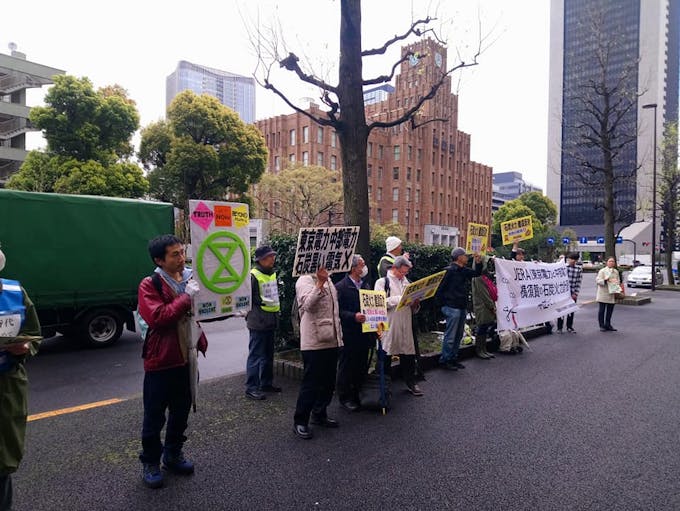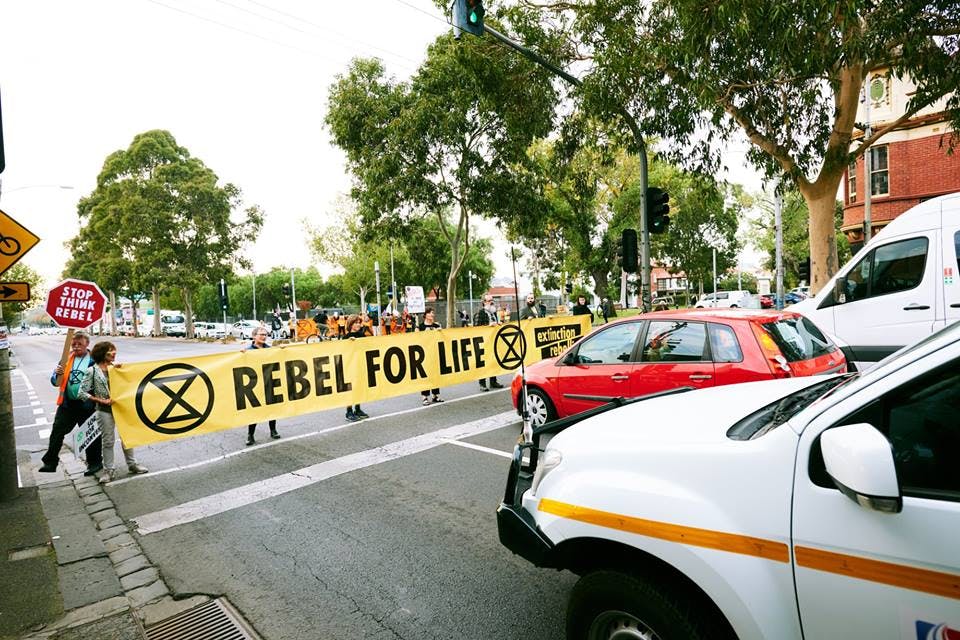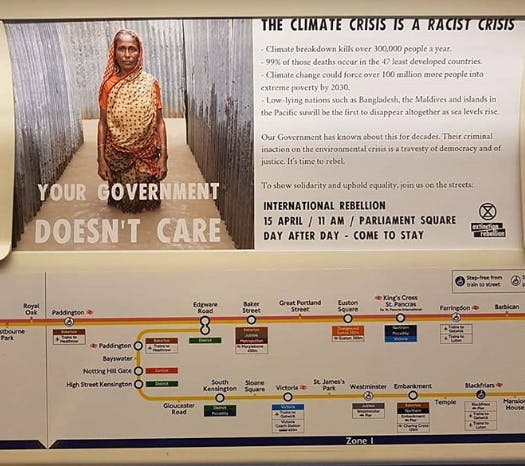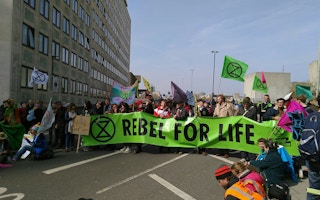People in cities around the world have taken to the streets to protest against the inaction of their governments to confront climate change.
To continue reading, subscribe to Eco‑Business.
There's something for everyone. We offer a range of subscription plans.
- Access our stories and receive our Insights Weekly newsletter with the free EB Member plan.
- Unlock unlimited access to our content and archive with EB Circle.
- Publish your content with EB Premium.
Environmental civil disobedience movement Extinction Rebellion (XR), which started in the United Kingdom in October last year, has spread to more than 40 countries including India, Japan, Australia, New Zealand and Solomon Islands, where protesters are blockading major roads in city centres to demand action on what the group calls “the global climate and ecological emergency.”
The group believes that governments have not done enough to protect their people from climate change—and mass civil disobedience is the best way to change climate policy. “We are facing environmental breakdown and nothing remotely proportionate is being done about it,” one protester told The Guardian newspaper. When you look at the facts, this [climate change] is happening now and the government response is utterly woeful.”
The “international rebellion” began on 15 April and is to run for a week, with more than 350 different XR protest groups in cities around the world planning activities, from speeches and free food stalls, to music, art murals and meditation sessions to run alongside the protests.

Extinction Rebellion groups around the world. Image: rebellion.earth/

Extinction Rebellion in Japan. Image: XR Japan Facebook page
In Asia Pacific, XR activity has taken on different forms. Australia, New Zealand and India have the most active XR following, while in Japan the action has taken a less confrontational approach, with a small group of activists handing out leaflets and engaging with passers-by in Tokyo.
In India, where XR is still being set up, demonstations are to take place alongside green movement Fridays For Future and other climate groups that align to XR’s principles.
In Australia, protests are running in connection with the movement against the Carmichael coal mine, a development in Queensland that activists say could damage the Great Barrier Reef and produce more greenhouse gas emissions per year than Sri Lanka or Bangladesh.

Extinction Rebellion Australia action. In Australia, police have permitted the road blocks, with the condition that the protesters help them manage the traffic. Image: XR Australia Facebook page
XR groups have been set up on Facebook in Pakistan and South Korea, but with no activity planned yet. XR has yet to take root in Southeast Asia.
The protests take place at a time when citizen protests against climate change are growing in number around the world, particularly among the young. The climate strike movement has seen thousands of students skip school to protest against the inaction of adults to confront the climate crisis, inspired by Swedish teenager Greta Thunberg.
‘The climate crisis is a racist crisis’

‘The climate crisis is a racist crisis’: XR poster highlights the 300,000 lives lost to climate change every year, 99 per cent of which are in developing countries.
Advertisements leading up to international rebellion day on London’s Underground train network warned that rising seas could flood much of the train network, the world’s largest metro system.
One poster called the climate crisis “a racist crisis,” as climate change will hit the world’s poorest countries the hardest, including low-lying countries such as Bangladesh and the Maldives, which will be the first to be affected by rising sea levels.
“Our Government has known about this for decades. Their criminal inaction on the environmental crisis is a travesty of democracy and of justice. It’s time to rebel,” reads the poster.
Another poster critised Earth Hour, the long-running environmental movement from World Wide Fund for Nature (WWF) that calls on people to turn their lights off for an hour every year, to be mindful of the impact humanity has on the planet.
“Everything will be fine. The panda made you switch the lights off,” mocks the billboard. “This is an emergency. We’re headed for extinction. It’s time to move past half-measures.”
The poster features the hashtag #IAmTheWalrus, a reference to a disturbing scene from Netflix’s recently launched Our Planet documentary that shows the impact of melting Arctic sea ice on the lives of walruses. Without ice to rest on, the animals are depicted as climate refugees as they huddle in massive numbers, fighting for space on small islands off the coast of Russia.











